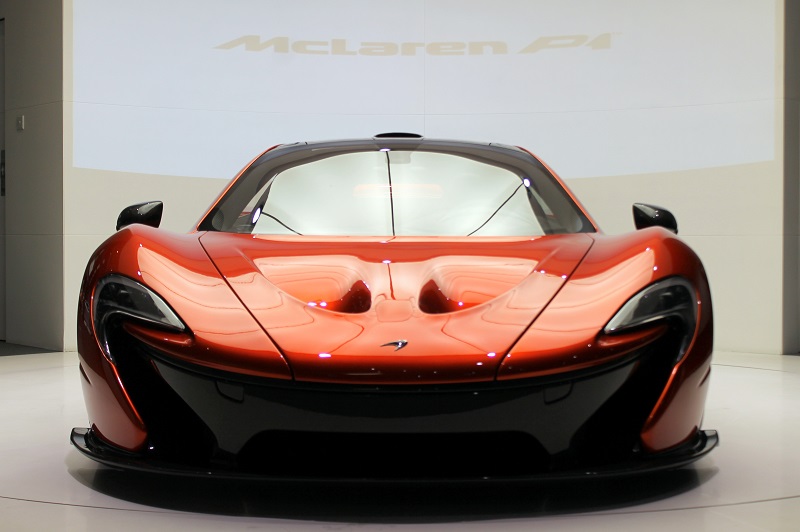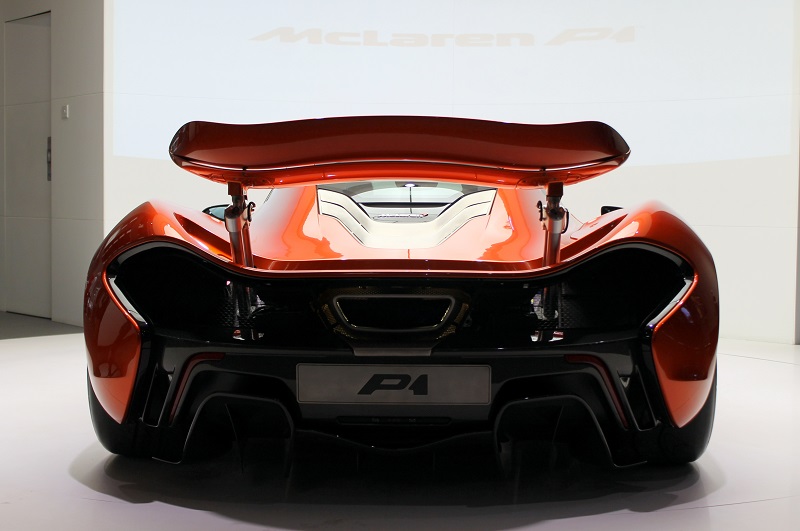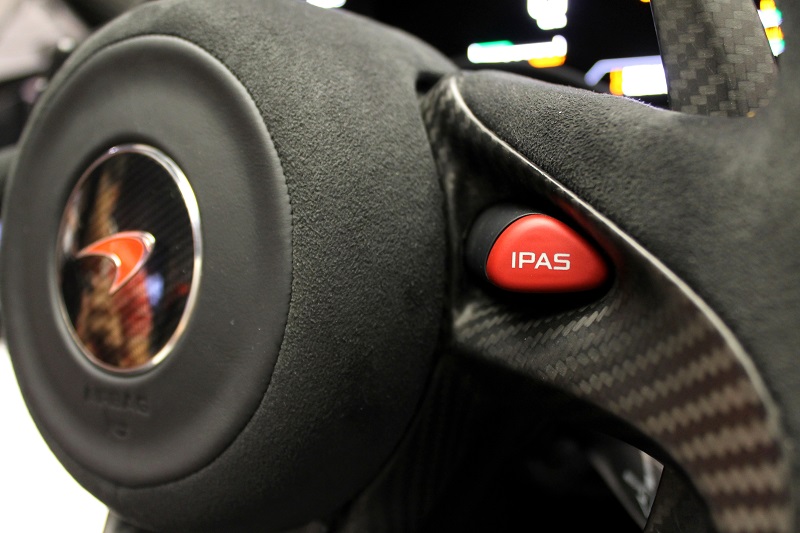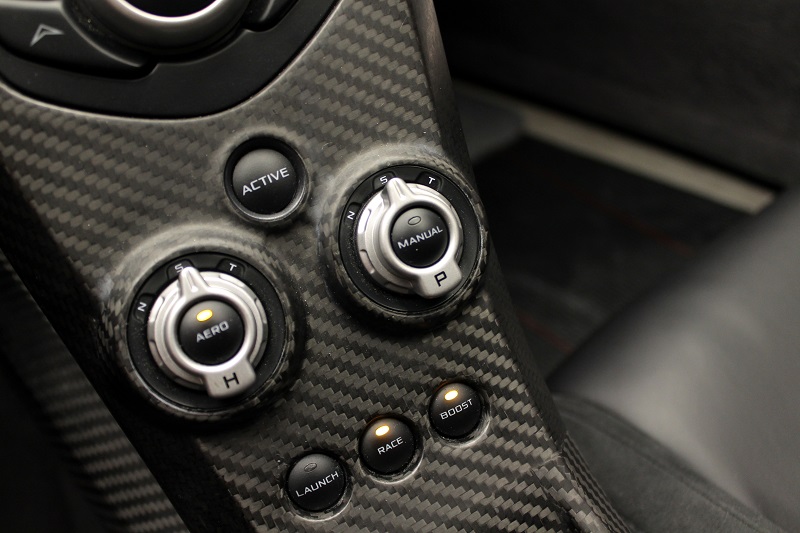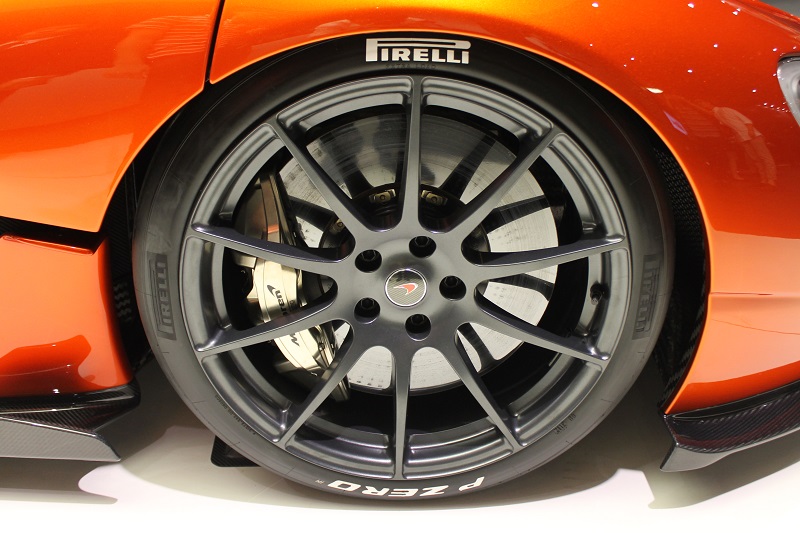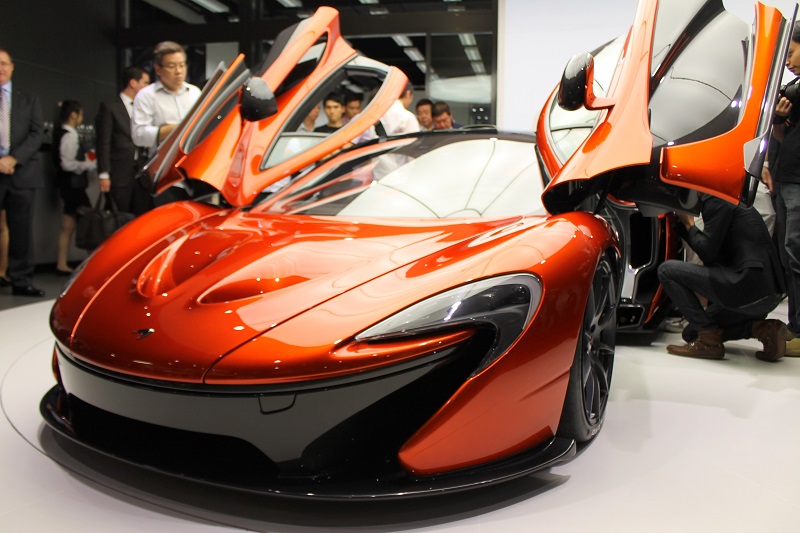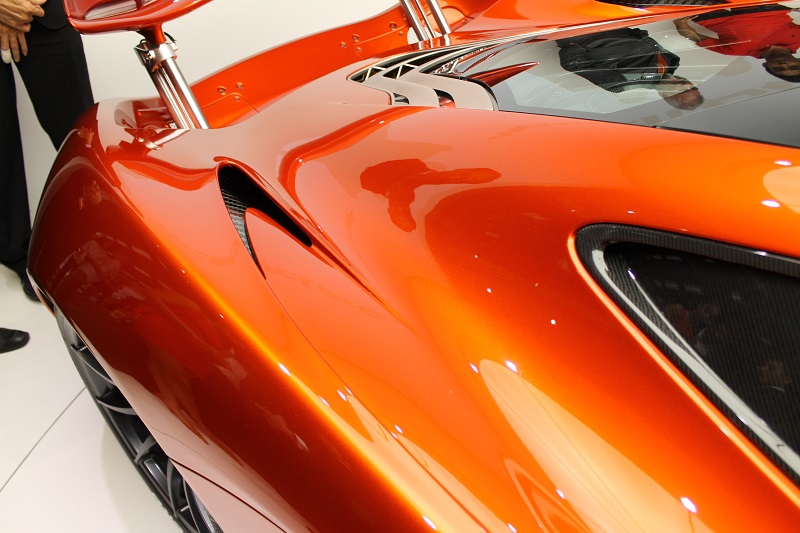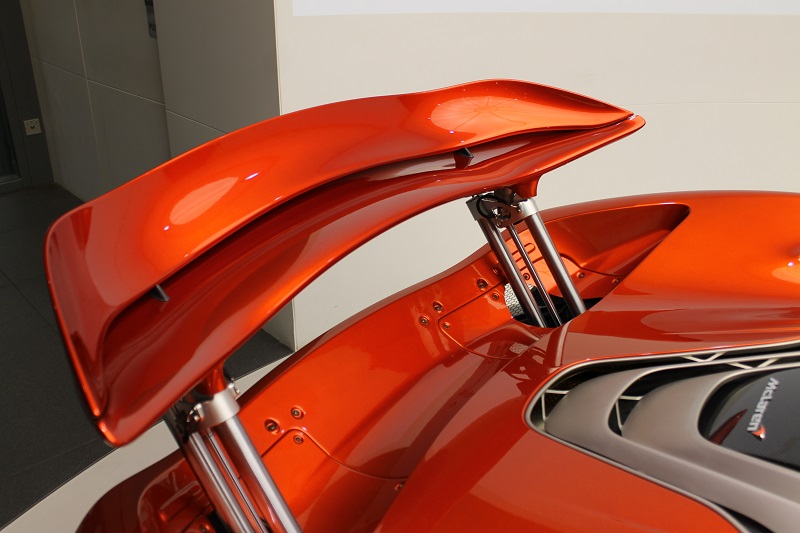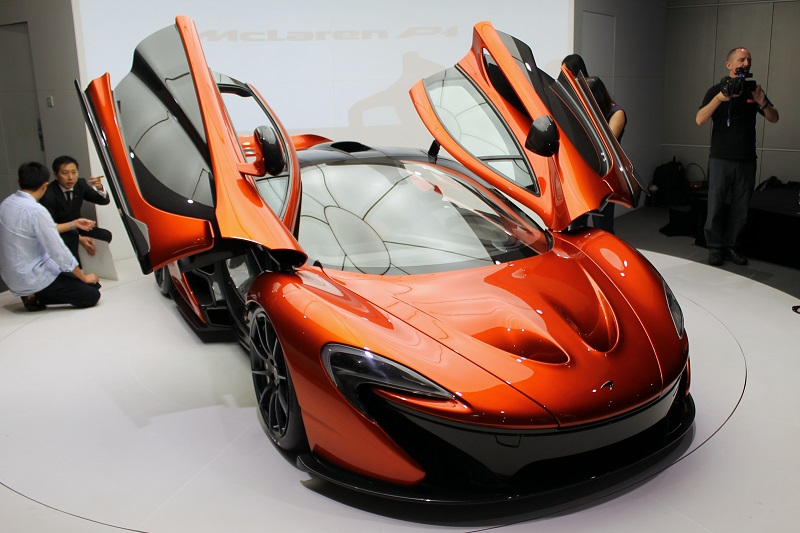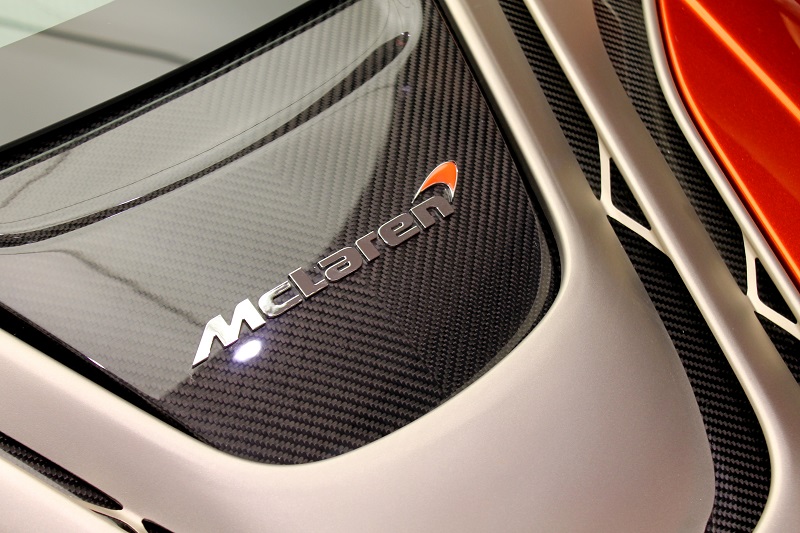Singapore is the first stop for the P1 as it makes its way around the region
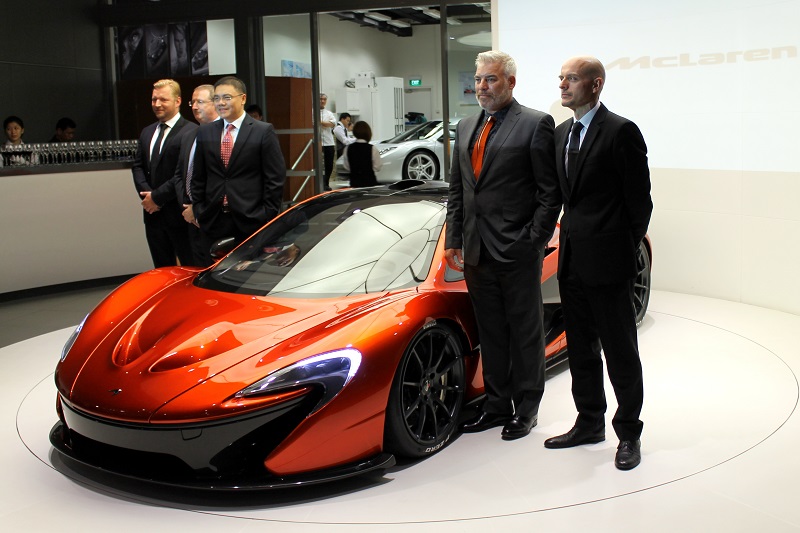
With McLaren’s thirty years’ experience working with carbonfibre (first carbonfibre chassis in Formula One and first all carbon-bodied road car, the F1), it comes as no surprise that the P1 is entirely constructed from the black weave — right down to its central load-bearing structure, the MonoCage tub. And since carbonfibre is moulded, the body panels could be shaped in far more complex and extreme ways than if they were made of steel or aluminium. Indeed, it is a real treat to witness and examine the P1 in the flesh, where you can’t help but marvel at how sculpted the car looks. Pictures alone do not do it justice.
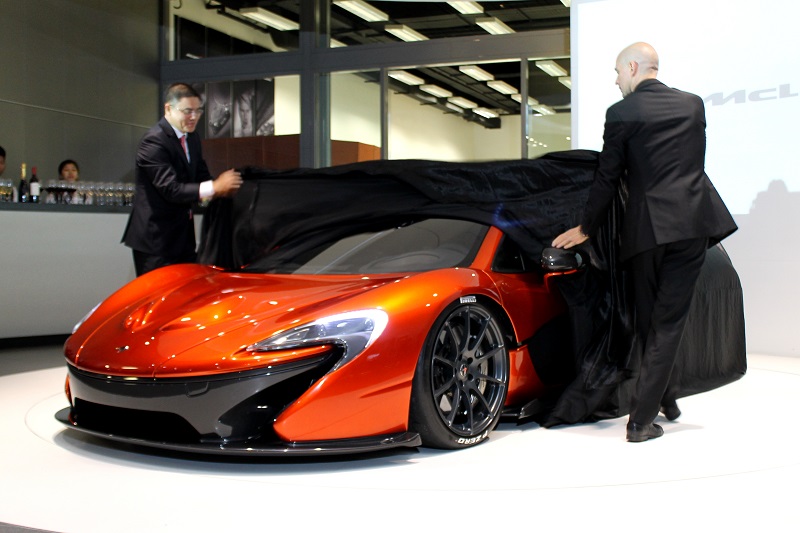
The looks aren’t just for show either — the P1 was designed using computational fluid dynamics (CFD) to optimise aerodynamics, such that every surface either adds to downforce, directs the airflow for cooling, or reduce drag. Together with the Formula One-style DRS rear wing, the P1 can achieve similar levels of downforce to a GT3-spec racing car, approximately 600 kg at 260 km/h.
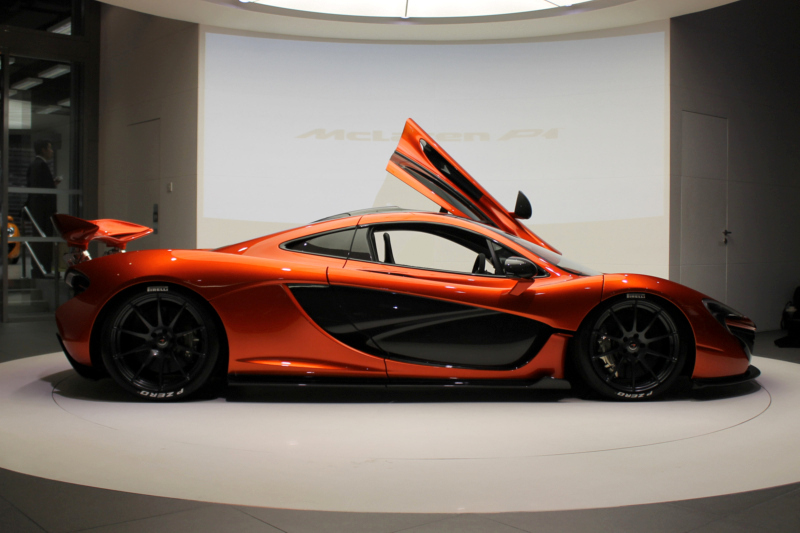
In spite of the startling figures though, the P1 needn’t be a punishing thing to drive on the roads. Much has been said of McLaren’s decision to do away with anti-roll bars on their cars, instead preferring a hydro-pneumatic system they dub RaceActive Chassis Control to control wheel movement and keep the car level in corners. In this way, the suspension at the four corners is truly independent of each other, giving best-in-class ride comfort.
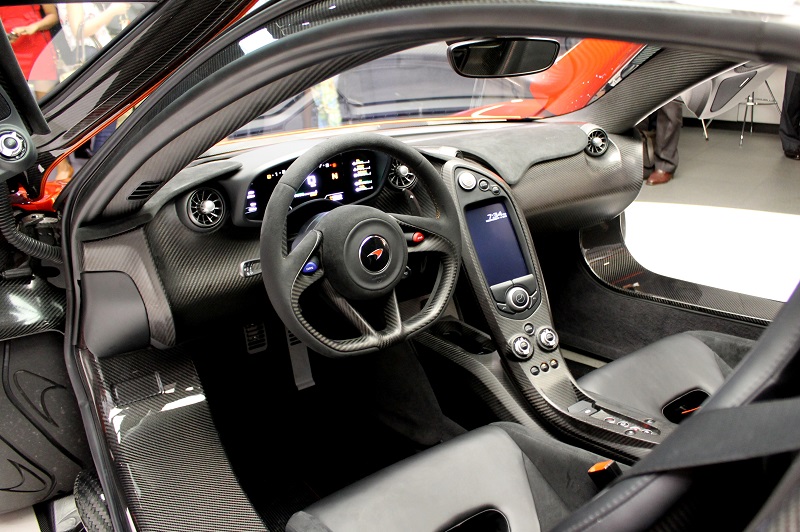
In the words of Greg Levine, Sales and Marketing Director of McLaren Automotive, "The brief was to make a refined, fuel efficient car that is faster than anything else on the racetrack but that is also as fast as anything you could use on the road while not compromising ride or comfort."
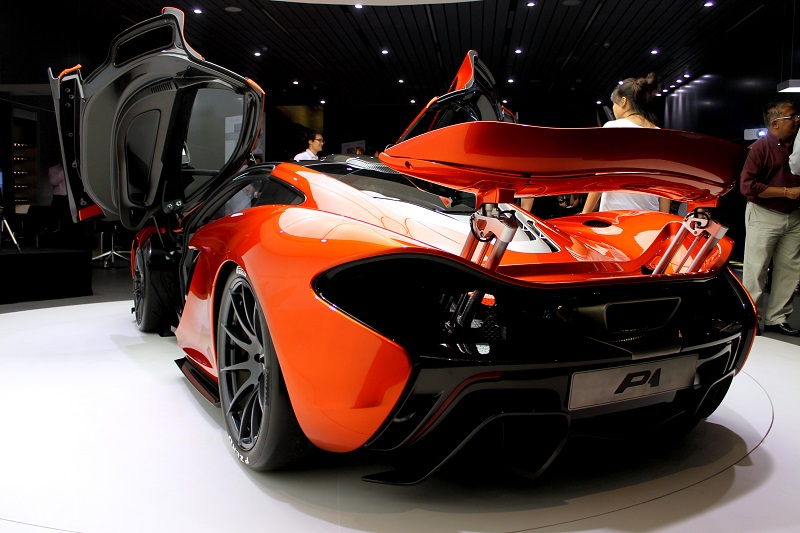
He continued, "Owners will become part of the McLaren family, if they aren’t already. To maintain exclusivity, we have closely monitored demand, and announced a production number of just 375 units — a figure that will ensure the McLaren P1â„¢ will remain a rarity and, if spotted on the road, an unforgettable sight.”
